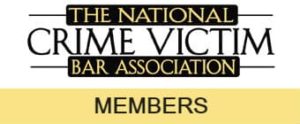
Hi - I’m Jeff. I am a lawyer licensed to practice law in Indiana. Our attorneys fight every day for the rights of sexual abuse victims. My team and I are ready to help.
Our local Linton sexual assault lawyers have sponsored this article documenting the history of Linton. Discover more if you are visiting the area, or have lived here for years.
Located in south western Indiana, Linton is a coal mining city which was founded in the 1830s. John W. Wines was an entrepreneur who briefly sold goods in Linton in 1831, but would return and open a general store in 1837. Wines also built a horse mill and a tannery. The city wasn't officially named until 1850 and the city was planned and laid out by Hannah Osborne and Isaac Coddington. Coal mines in the area lead to a rapid expansion of the population.
In the 1920s, it is thought that there were at least 35 bars and an equal number of churches in the town. Surface mines were also beginning to take over the land surrounding the city. Today, signs of the underground mines still exist, with sinkholes appearing across private property and within city limits. Strip-pit lakes from surface mines still surround Linton, and they offer fishing tourism. General Electric built a factory in the city in 1952, but by the mid-1980s this ceased to employ residents as small motors production was phased out.
After the Civil War, there was racial tension in the city. In 1986, at least 300 African American strikebreakers were driven from the town and were prohibited from living in the city. Linton became known as a Sundown Town, a racially segregated town meaning non-Whites were to leave by sundown. A few years later in 1903, miners also drove Black waiters from the town. This violence and segregation continued into the 1940s.
The town of Linton spans just over 3 square miles. The population saw hits peek in 1980 when the census recorded 6,315 residents, the second highest being in 1940 with 6,263 residents.
In the 2012 census, there were 5,413 residents recorded living in 2,325 households. A diversified population has yet to return to the town. In 2010, the population was 97.7% White with just .1% African American residents, the remaining population was made of .3% Native American, .4% Asian, 1.2% Hispanic or Latino and 1.2% from two or more races. About 44% of the residents were married couples, with the median age in the city being 39.8 years old.
Today, Linton is home to many art and culture festivals and activities. This includes the Linton Music Festival, with its tagline 'Mayberry Meets Woodstock." This free event is an all ages festival, promoting music, economic development and tourism. It is held the weekend before Labor Day and in 2010 over 12,000 people attended the festival.
There are a number of historic buildings in Linton. This includes the Margaret Cooper Public Library as well as the Linton Commercial Historic District.
Linton is home to one of the largest Independence Day parades in Indiana. This parade brings in over 40,000 people and has been running every year since 1905. Today, this festival is a week-long celebration with a carnival, music and other entertainment, ending with fireworks on the Fourth of July.
Learn more about the local town of Washington, Indiana.
If you are in need of a sexual assault lawyer in Linton, do not hesitate to call today. Our phones are available 24/7 and we offer free, confidential consultations. Our experienced team knows it can be hard to come forward about abuse you may have suffered, but know that by coming forward you can be helping prevent future victims.


